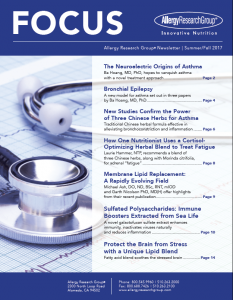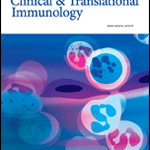 By: Michael Ash, DO, ND, BSc, RNT, and Garth Nicolson, PhD, MD(H)
By: Michael Ash, DO, ND, BSc, RNT, and Garth Nicolson, PhD, MD(H)
Healthy membranes are key to the function of both cells and their intracellular organelles, such as mitochondria. Healthy cellular membranes can fully maintain their chemical and electrical barrier functions, and also act as cellular signals to promote positive changes in cellular functions and health. Defects in cellular and intracellular membranes are characteristic of all chronic medical conditions, including cancer, and normal processes, such as aging.
In a special issue of the research journal Biochimica et Biophysica Acta—Biomembranes, entitled Membrane Lipid Therapy: Drugs Targeting Biomembranes, we published an invited review on the role of a specially prepared mixture of glycerolphospholipids on human health. This special mixture serves as a natural replacement of damaged membrane phospholipids.[1] Our review, along with other recent articles,[2],[3] explores practical ways to replace damaged lipids in membranes.
This novel field, described as Membrane Lipid Replacement, is growing and evolving rapidly, providing treatments that are now in general use or that are being studied for their application in numerous conditions.1,2,3 Nowhere is this more apparent than in mitochondrial membranes, which provide most of our cellular energy needs (via the production of adenosine triphosphate, or ATP). This field has arisen from relevant discoveries on the behaviour of membranes, and it paves the way to adopt new approaches in modern nutrition. 1,2,3
Clinical trials have shown the benefits of Membrane Lipid Replacement in restoring mitochondrial function and reducing fatigue in aged subjects and chronically ill patients.
he plasma or cell membrane was historically viewed by most scientists as a fixed physical barrier where lipids arranged as a bilayer performed a mainly structural function, and proteins undertook the relevant catalytic and signalling tasks. This view of the membrane lipid bilayer sandwiched between protein layers prevailed until recent years. Studies carried out in the 1970s clearly indicated that membrane fluidity allowed lipids and proteins to move relatively freely along the plane of membranes, which could also regulate their activities.
The landmark paper published by Singer and Nicolson in 1972 proposed the Fluid Mosaic Membrane model, which defined the membrane structure as a two-dimensional viscous solution of lipoproteins and glycolipids in thermodynamic equilibrium. These proteins are asymmetrically distributed across a dynamic lipid bilayer matrix.[4] Over the years this model has been refined, but the basic concepts have remained, minimally changed in the past 45 years.[5]
We define “Membrane Lipid Replacement“as the use of functional, oral supplements containing mixtures of cell membrane glycerolphospholipids, plus fructoo-ligosaccharides (for protection against oxidative, bile acid, and enzymatic damage) and antioxidants. This unique blend can safely replace damaged, oxidized membrane phospholipids and restore membrane, organelle, cellular, and organ function.
When the glycerolphospholipids arrive at their membrane destinations, they can stimulate the natural removal and replacement of damaged membrane lipids. Clinical trials have shown the benefits of Membrane Lipid Replacement in restoring mitochondrial function and reducing fatigue in aged subjects and chronically ill patients.[6] Recently, Membrane Lipid Replacement has been used to reduce pain and other symptoms, as well as removing hydrophobic chemical contaminants as part of ongoing clinical research, suggesting that there are additional new uses for this safe, natural medicine supplement.
References
[1] Nicolson GL, Ash ME. Membrane Lipid Replacement for chronic illnesses, aging and cancer using oral glycerolphospholipid formulations with fructooligosaccharides to restore phospholipid function in cellular membranes, organelles, cells and tissues. Biochim Biophys Acta. 2017;1859:1704-24. PMID: 28432031
[2] Nicolson GL. Membrane Lipid Replacement: clinical studies using a natural medicine approach to restoring membrane function and improving health. Intern J Clin Med. 2016;7:133-43. doi: 10.4236/ijcm.2016.72015.
[3] Nicolson, GL, Rosenblatt S, Ferreira de Mattos G, et al. Clinical uses of Membrane Lipid Replacement supplements in restoring membrane function and reducing fatigue in chronic diseases and cancer. Discoveries. 2016;4(1):e54. doi: 10.15190/d.2016.1
[4] Singer SJ, Nicolson GL. The fluid mosaic model of the structure of cell membranes. Science. 1972;175:720-31. PMID: 4333397
[5] Nicolson GL. The Fluid-Mosaic Model of Membrane Structure: still relevant to understanding the structure, function and dynamics of biological membranes after more than 40 years. Biochim Biophys Acta. 2014;1838:1451-66. PMID: 24189436
[6] Agadjanyan M, Vasilevko V, Ghochikyan A, et al. Nutritional supplement (NT Factorâ„¢) restores mitochondrial function and reduces moderately severe fatigue in aged subjects. Journal of Chronic Fatigue Syndrome. 2003;11(3):23-36.





